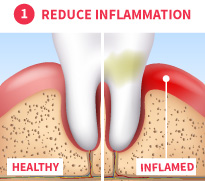
Reduce or eliminate inflammation: The bacteria, and the endotoxins produced by the bacteria, start the infection in your body. Your gums become redder, not pink, and may swell. Generally, reducing or eliminating inflammation means your body is winning the fight against the disease.
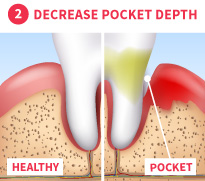
Decrease pocket depth: As gum disease progresses, the microscopic ligaments that bind your teeth to your gums become broken and ‘pockets’ form. The ‘pocket’ is the space between your tooth and gum. As you can imagine, loose particles of food may get stuck in these pockets and make the bacterial infection worse.
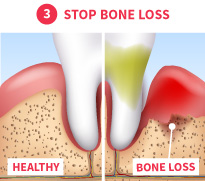
Stop/slow attachment and bone loss: The microscopic ligaments that bind the teeth to the gum tissue and bone is commonly referred to as ‘attachment’. The goal is to stop or slow the ligaments breaking. In severe cases of gum disease, the alveolar bone is also eaten away. Alveolar bone is the bone that holds your teeth; when it is eaten away your teeth will become loose and may fall out.
Initial Treatment Options
In the early stages of gum disease, you may be offered a laser pocket disinfection debridement (formerly known as Scaling/root planning (SR/P)) and air prophylaxis.
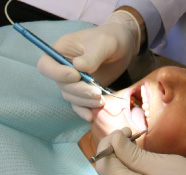
A dental laser is used to kill the bacteria in the pocket. Special licences are required to perform procedures using lasers.
Pros: One of the industry’s most commonly accepted ways to treat early gum disease.
What to watch for: Patients may experience discomfort and treatment may not remove bacteria.
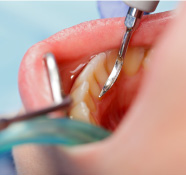
SCALING AND ROOT PLANING
during debridement, thecdentist, hygienist, therapist or OHT uses metal instruments to scrape away the tarter and calculus on the root surface. Depending upon your dentist, an antibacterial gel may be applied, or an antibacterial rinse prescribed.
Pros: One of the industry’s most commonly accepted ways to treat early gum disease.
What to watch for: Patients may experience discomfort, treatment may not remove bacteria.

Air Prophylaxis
SCALING AND ROOT PLANING
during debridement, thecdentist, hygienist, therapist or OHT uses metal instruments to scrape away the tarter and calculus on the root surface. Depending upon your dentist, an antibacterial gel may be applied, or an antibacterial rinse prescribed.
Pros: More recently the use of air prophylaxis has made early stages of treatment a far more comfortable process.
What to watch for:Not all air prophylaxis instruments are the same and some (such as GBT® treatment) are a patented protocol, make sure your dentist has completed the required training to perform these procedures.
Advanced Treatment Options
If initial treatment is not successful, or if your gum disease is identified in a later stage, your dentist may recommend gum disease surgery.
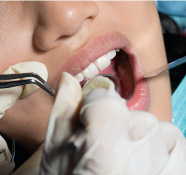
OSSEOUS SURGERY
In traditional surgery, a periodontist uses a scalpel to cut your gums and fold them back. This allows the doctor to access to the tooth root to clean the target from the tooth and view the alveolar bone. If needed, the bone may be reshaped, and bone graft material is placed in the surgical site. The top of the gums may be cut back to make the pocket less deep and easier to keep clean. The gums are sewn back together. Dental laser is used to kill the bacteria in the pocket. Some states allow hygienists to use lasers, while other states only allow dentists to perform procedures using lasers.
Pros: The classic treatment for advanced gum disease, generally done by a specialist with additional years of dental school.
What to watch for: This surgery may cause your gums to recede, exposing more of your tooth root and leading to increased sensitivity.
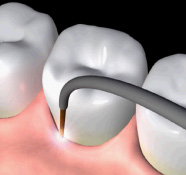
During this laser-based surgery, your dentist inserts a fiber into the pocket between the gum and tooth. The laser energy kills the bacteria, targeting the source of the inflammation without hurting or removing healthy tissue. The biting surface of your teeth is adjusted to keep from hitting each other with too much force.
The LANAP protocol is a patented periodontal treatment, cleared by the FDA in 2004 and more recently it is available in Australia.
Pros: Patients report less pain and discomfort post surgery, with less recession of the gums. The LANAP protocol has been FDA cleared to regenerate new bone, new ligament and new cementum – replacing the oral tissues lost to advanced gum disease.
What to watch for: LANAP treatment is a patented protocol, make sure your dentist has completed the required training to perform this procedure. Only one dental laser, the PerioLase MVP-7 has the proper operating parameters for this surgery, so not all dental lasers can be used. You should ask what laser your dentist will be using to perform this procedure.
